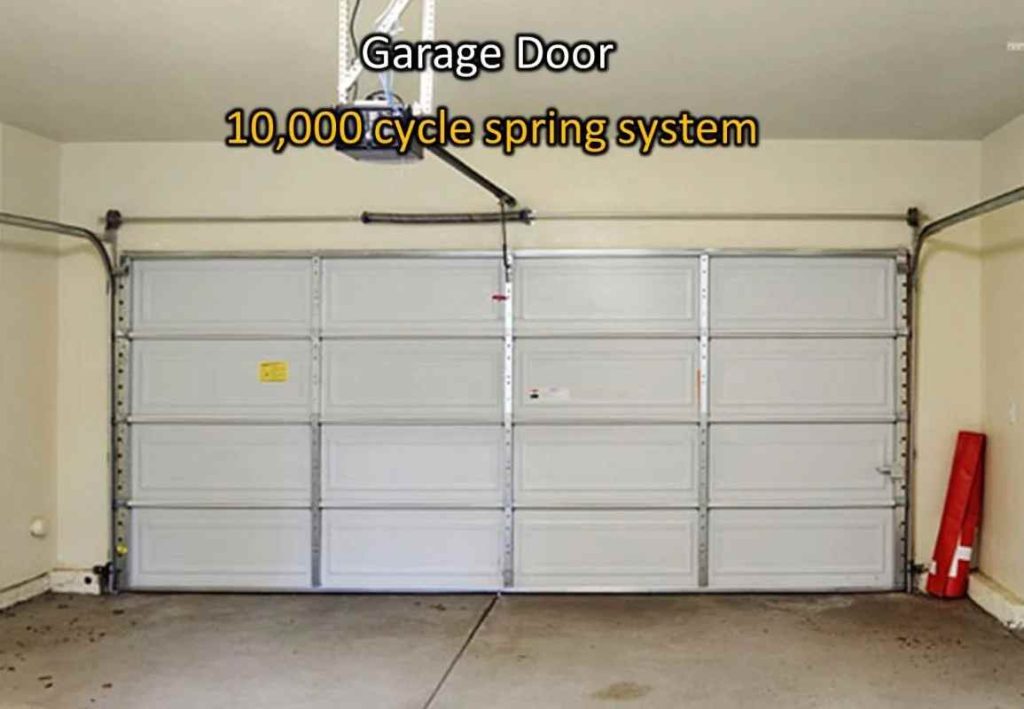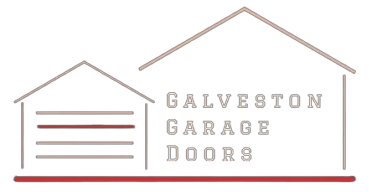Maintaining a well-functioning garage door is essential for homeowners in Galveston, where the coastal climate can pose unique challenges to mechanical systems. Among the critical components of a garage door system, springs play a vital role in ensuring smooth and efficient operation. However, these springs are also prone to wear and tear, especially in environments with high humidity and salt content. Early detection of spring issues is key to preventing costly repairs and potential safety hazards. In this guide, Galveston Garage Door will delve into ten early signs of garage door spring wear and tear that Galveston homeowners should be aware of, along with proactive measures and professional interventions to keep their garage doors operating optimally.
1. Loud Noises
When the serene ambiance of your home is pierced by the grating sound of metal against metal each time the garage door operates, it’s a clear signal that something is amiss. These loud noises, often described as creaking, grinding, or popping, are not just disturbing; they are indicative of garage door springs that are under duress or starting to fail.
Garage door springs are under constant tension, and over time, this tension can cause the springs to wear down, leading to noise as the garage door moves. Rust formation, due to Galveston’s humid and salty air, can exacerbate this issue, increasing friction and thereby noise. Regular lubrication can mitigate these sounds to some extent, but persistent noises despite maintenance efforts suggest that the springs are nearing the end of their useful life and require professional attention.
2. Imbalance
A garage door that appears uneven or hangs crookedly can be a symptom of spring wear and tear. This imbalance is particularly concerning because it indicates that one spring may be deteriorating faster than its counterpart, causing uneven lifting force on the door. An imbalanced door not only poses a risk of further mechanical damage but can also be a safety hazard, as it may close unexpectedly or with more force than intended.
In coastal areas like Galveston, the added challenge of corrosion can accelerate spring wear, leading to imbalance sooner than homeowners might anticipate. Regularly testing the balance of your garage door spring and the opener system for manually lifting the door to see if it remains in place halfway open—can help you catch this issue early. If the door slams shut or opens on its own, it’s a clear indication that the springs are not functioning as they should.
3. Slow Movement
Springs play a crucial role in facilitating the smooth and swift operation of your garage door. When these springs start to wear out, one of the first signs might be a noticeable decrease in the speed at which your garage door opens or closes. This slow movement is often a result of the springs losing their tension, making it harder for them to assist in lifting the door.
For homeowners, slow movement can be frustrating, but it also signals that the springs are under excessive strain and may soon break. Given the potential for sudden failure, identifying and addressing this early sign can prevent inconvenience and ensure safety. It’s advisable to monitor the time it takes for your garage door to open or close and be wary of any significant deviations from the norm.
4. Visible Wear

Conducting a visual inspection of your garage door springs can reveal clear signs of wear and tear. Visible indicators include gaps in the spring coil, which suggest the spring is stretched and losing its ability to function properly. Rust is another enemy of garage door springs, particularly in the salty, humid air of Galveston. It can eat away at the metal, reducing the spring’s strength and flexibility. Lastly, if you notice that the springs appear stretched out or elongated compared to when they were new, this is a sign that they are no longer capable of properly supporting the door’s weight.
Routine inspections can catch these issues before they escalate into more significant problems. Homeowners should, however, exercise caution and avoid touching or attempting to repair garage door springs themselves, as these components are under high tension and can cause injury if mishandled.
5. Cable Slack
The cables that are attached to the garage door springs are also an essential component of the system’s operation, and they can show signs of spring wear indirectly. When springs begin to fail, they may not be able to maintain the tension necessary for the cables to remain taut. This can result in slack cables, which might get caught or tangled in the system, causing further operational issues or even resulting in the door becoming stuck.
Moreover, if you observe fraying on the cables, it could indicate that the springs are putting uneven or excessive tension on different parts of the door mechanism. Like the springs, these cables are under significant tension and can pose serious risks if they snap or come loose unexpectedly.
Regular monitoring and maintenance of your garage door’s springs and related components can significantly extend their lifespan and ensure the safety and security of your home. In places like Galveston, where environmental factors can hasten wear, being vigilant about these early signs is even more critical. If you notice any of these symptoms, it’s advisable to seek professional assistance from a garage door specialist who can safely assess and remedy the situation, ensuring your garage door continues to function smoothly and safely.
6. Difficulty Opening/Closing
One of the most noticeable and inconvenient signs of garage door spring wear is difficulty in opening or closing the door. If you find yourself exerting more force than usual to operate the garage door, or if it suddenly stops midway or reverses direction unexpectedly, it’s a clear indicator of spring issues.
In coastal areas like Galveston, where the air’s high moisture content can accelerate corrosion and wear on metal components, garage door springs are particularly susceptible to premature failure. Ignoring these difficulties in operation can lead to complete spring failure, leaving your garage door stuck in an open or closed position—a situation that not only compromises security but also disrupts your daily routine.

7. Age of the Springs
Understanding the lifespan of garage door springs is crucial for proactive maintenance. Typically, these springs are designed to last around 7 to 9 years with regular use. However, environmental factors, such as the salty air in coastal regions like Galveston, can shorten this lifespan.
Keep track of when your garage door springs were last replaced or installed. If they are approaching or have exceeded their expected lifespan, it’s wise to be extra vigilant for any signs of wear and tear. Even if there are no apparent issues yet, consider scheduling a professional inspection to preemptively address any potential problems and ensure the continued smooth operation of your garage door.
8. Spring Maintenance and Lubrication
Regular maintenance and lubrication of garage door springs are essential preventive measures. Lubricating the springs and other moving parts of the garage door system can reduce friction, minimize wear, and prolong the lifespan of these components.
In Galveston’s coastal environment, where humidity and salt can accelerate corrosion and rust formation, using a high-quality lubricant designed for garage door systems becomes even more critical. Regularly inspecting and lubricating the springs as part of your home maintenance routine can go a long way in preventing premature wear and ensuring that your garage door operates smoothly and efficiently.
9. Professional Inspection and Repairs
While homeowners can perform basic visual inspections, garage door spring issues often require professional expertise for safe and effective resolution. A qualified garage door technician can conduct a comprehensive inspection to identify any underlying problems with the springs or other components of the system.
Additionally, attempting DIY repairs or adjustments on garage door springs can be extremely dangerous due to the high tension these springs are under. It’s best to leave such tasks to professionals who have the knowledge, experience, and proper tools to handle garage door spring repairs safely and effectively.
10. Safety Precautions and Awareness
Lastly, maintaining safety awareness regarding garage door springs is paramount for homeowners in Galveston. Educate yourself and your family members about the potential risks associated with garage door spring wear and failure. Warn against touching or attempting to adjust the springs without proper training and equipment.
Ensure that your garage door opener has a functioning safety reversal feature, which can prevent accidents if the door encounters an obstruction during operation. Regularly test this feature to confirm its effectiveness. By staying informed and taking necessary precautions, you can enhance the safety of your garage door system and minimize the risk of accidents or injuries related to spring issues
Conclusion:
In conclusion, being proactive about identifying and addressing early signs of garage door spring wear and tear is crucial for Galveston homeowners. The coastal climate presents unique challenges that can accelerate spring deterioration, making regular inspection and maintenance essential. By paying attention to symptoms such as loud noises, imbalance, slow movement, visible wear, cable slack, difficulty in operation, and considering the age of the springs, homeowners can catch potential issues early on. Moreover, investing in professional inspections, regular lubrication, and adhering to safety precautions can significantly prolong the lifespan of garage door springs and ensure the safety and smooth operation of the entire system. By staying vigilant and taking proactive measures, homeowners can avoid unexpected breakdowns and costly repairs, ultimately enhancing the functionality and reliability of their garage doors in Galveston.
